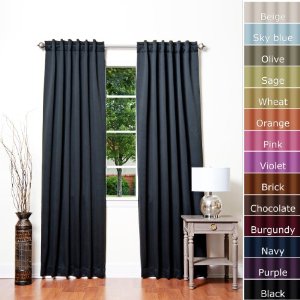Methods Of Soundproofing

As a general rule, a set of heavy blackout curtains will help with soundproofing, but fall far short of things like triple pane windows and thicker insulated walls.
It is human nature to try and find the cheapest and quickest solution for our problems, and soundproofing issues are no different.
Anyone who has been kept up at night because of loud music next door, or a dog’s bark down the road has undoubtedly considered every cheap soundproofing technique available.
Unfortunately, soundproofing isn’t a problem that can easily be fixed. It requires either specific engineering techniques to isolate a wall, or large amounts of mass to stop sound.
One product that always falls short of expectations are soundproof curtains.
As a rule of thumb, it takes over 7 inches of solid concrete to block sound. It’s simply not possible to fit that much mass into a fabric that can be hung from a curtain rod.
Secondly, curtains simply do not provide enough coverage of the wall to do any good even if they did contain the mass.
So the question for most homeowners still remains, are there any cheap soundproofing methods that actually work?
Cheap Soundproofing Reality
The reality is that it is going to take at least a few hundred dollars and a lot of spare time to actually soundproof a wall.
One of the easiest ways to do so is by beefing up your walls with a second layer of sheetrock.
However, rather than screw it to the wall, therefore transferring the sound vibrations through to the next wall, using a sound barrier adhesive has been shown to have much more effective results.
Sound barrier adhesives are a great way to soundproof a wall even if you have little DIY experience.
Since the majority of the wall is already covered with the existing drywall, all you have to do is glue the second sheet to the wall with a 1/8″ – 1/4″ bead of carpenter’s or drywall glue. The result is a simple way to add both mass and isolation to your wall for less than a few hundred dollars.
After you have installed the second layer of drywall you will still need to tape and mud the joints of the drywall. After the mud has dried you will need to sand the joint smooth.
Oftentimes you will need to apply a second coat of drywall mud or compound, let that dry, and then sand again.
After that you can then apply paint primer to the whole wall. Once the primer is dry you are ready to apply the paint color of your choice.

